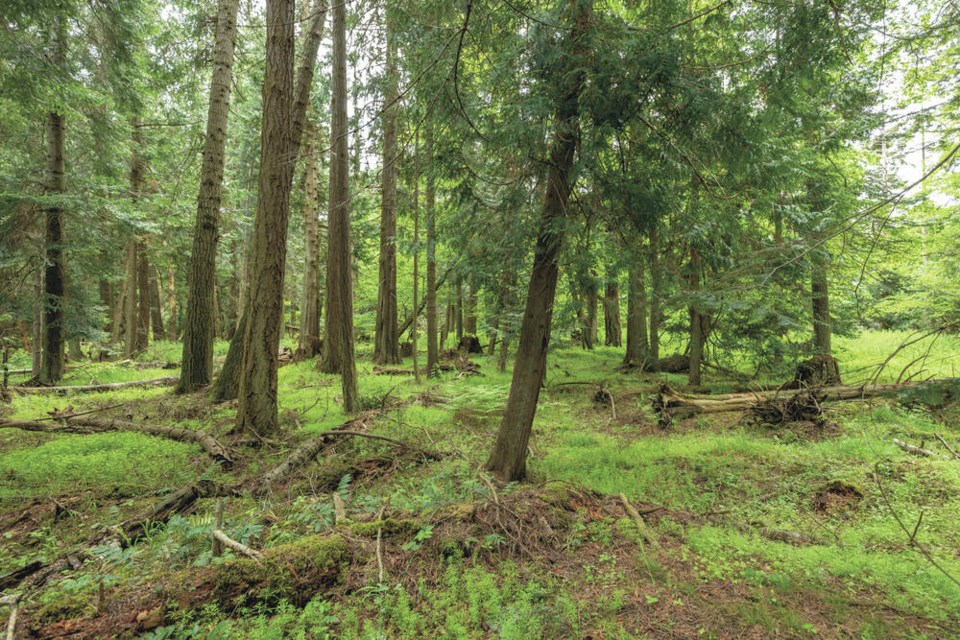Nature abhors a vacuum.
The phrase articulates the idea that unfilled spaces go against the laws of nature and physics and that every space must be filled with something.
The concept doesn’t apply just to thermoses and pickling jars, where vacuum seals prevent heat loss and entry of airborne microbes, respectively.
Wildlife managers also weigh its implications. When removing a species or reduce a species’ numbers in an area, they consider what might fill the void created, how, and how quickly.
For example, cougar territory from which a cougar has been relocated will be taken over by another, likely adolescent cougar.
Removing feral rabbits from around Victoria General Hospital leaves desirable bunny territory open to rabbits gone wild and breeding in neighbouring subdivisions (and to misguided people dropping their no-longer-wanted pet Easter bunnies off).
Relocating or culling deer from Saanich may prompt breeding does in Oak Bay, Victoria or further up the peninsula to move in and capitalize on the resulting reduced competition for food.
That’s why the CRD’s proposed goose-management plan includes egg addling as a means to control the region’s thriving Canada goose population.
It’s also why Oak Bay has offered its streets as a laboratory to test deer contraceptives. Since the immunocontraception program began in 2019, deer numbers in and around the municipality have fallen by 40 per cent.
The nature-vs-void concept is also among the objections raised by some Sidney Island residents to Parks Canada’s proposed fallow deer management plan.
As reported in these pages last month, for 10 days this fall, expert marksmen in a helicopter and on the ground will cull as many fallow deer on the island as possible. The BCSPCA will observe the hunt, and First Nations will take part in harvesting the fallow deer for meat and hides.
A one-year assessment and monitoring period will follow, with any fallow deer remaining on the island to be hunted.
Parks Canada, responsible for the 440-hectare Gulf Islands National Park Reserve part of the island, is leading the cull initiative, in collaboration with the WSÁNEĆ First Nations, Islands Trust Conservancy and island residents.
The decision to proceed with the cull came after a narrow 52 per cent vote in favour of the cull by the island’s residents. That approval squeaked through by just two per cent shows how controversial and fraught the issue is on the island.
Some residents who oppose the cull prefer to see the invasive deer continue to be managed by the island’s decades-old annual licensed hunt. They argue that the sudden removal of 500 fallow deer from the island will trigger a population boom of the native, resident Columbia black-tailed deer to fill the void — and similar ecological problems.
Some residents also say that new fallow deer individuals could swim to the island, filling the cull’s vacuum by another means.
Fallow deer, which are native to southern Europe, swam to Sidney Island from nearby James Island, where they were introduced in the early 1900s for hunting.
Given the species remains rampant on James Island, fallow deer can and will likely swim across again. That said, fewer deer are likely to swim to Sidney Island in a year compared to the number of deer that cross Cedar Hill Cross Road from Saanich to Oak Bay (and back and forth) in a week. It will take time for fallow deer to recolonize Sidney Island.
In the meantime, a boom in native black-tailed deer may occur in the absence of fallow deer competition. However, the two species differ in key ways.
A tour of the struggling forest understorey on Mayne Island, where fallow deer have been allowed free rein for a couple of decades, reveals fallow deer’s unselective and opportunistic diet choices. The species eats herbs, shrubs, ferns, leaves, seedlings, branch tips, and bark. Fallow deer gnaw sword ferns to the nubbins, repeatedly strip saplings of greenery, and mow down any shoots that poke above the soil.
Vancouver Island gardeners may find it hard to believe that our native deer are fussier and tend to damage natural landscapes less than fallow deer do. According to the Oak Bay deer-management study, Columbian black-tailed deer prefer easy pickings found in lush, well-watered city gardens and farms over the scratchy, dry menu available in Garry oak meadows and the area’s coastal forests.
As to the coming native black-tailed deer baby boom on Sidney Island, presumably licensed hunting by First Nations and residents would keep the native deer population in check before it reaches the point of imperilling any of the island’s restored meadows, forests and wetland areas.
>>> To comment on this article, write a letter to the editor: [email protected]



